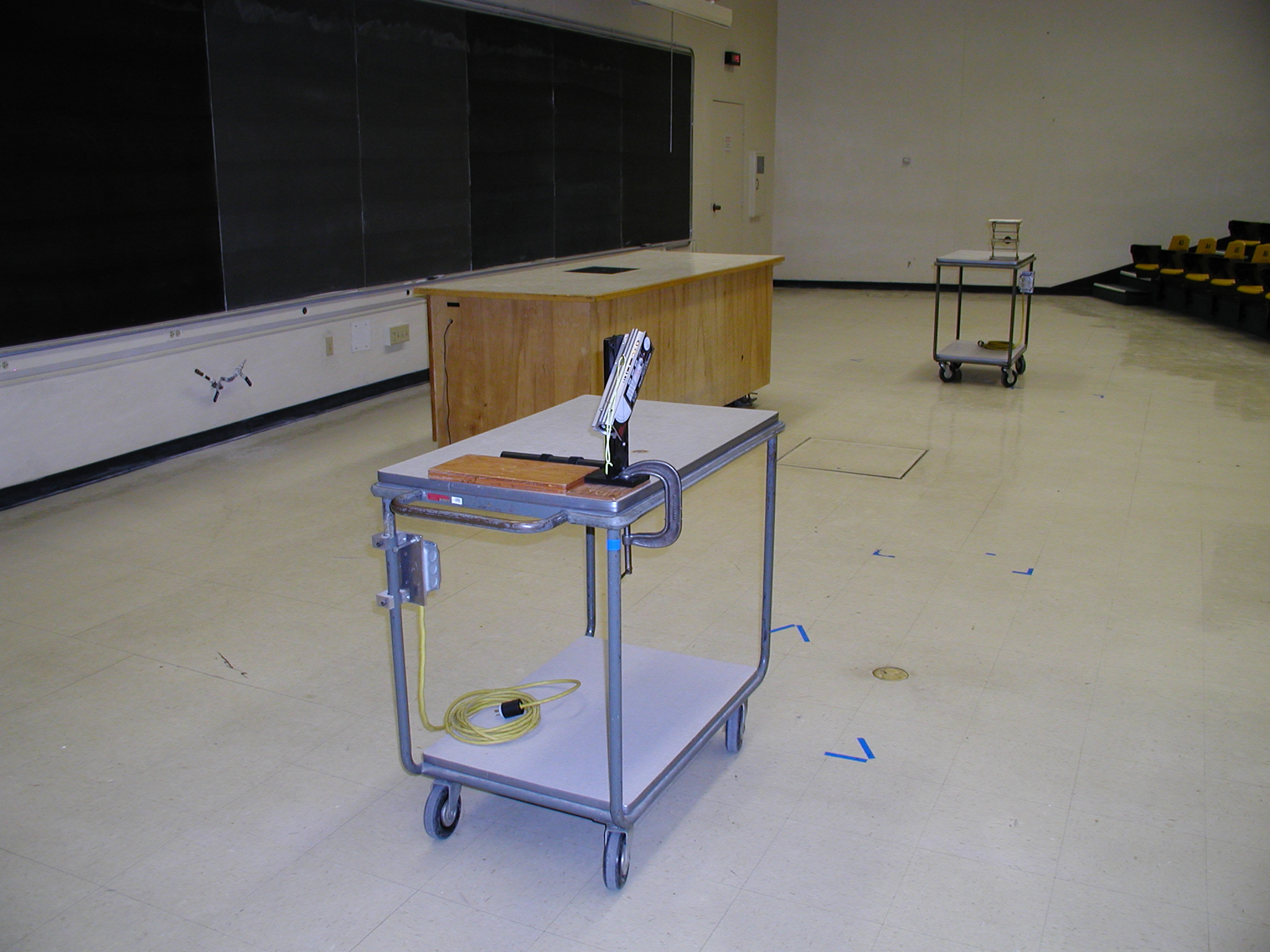| Physical Principles: Kinematics. |
| Student Prerequisites: For this demonstration, students need to be familiar with the following concepts - a.) resolution of a two - dimensional vector into components along the x and y axes, b.) conservation of energy, and c.) the kinematic equations of motion. |
| Introduction: The mathematical description of projectile motion highlights the importance of vectors in dealing with problems involving more than one dimension. This is because, in projectile motion, the horizontal motion and the vertical motion are independent of each other, so that each may be treated as one - dimensional motion along the corresponding dimension.
In this experiment, students will combine their knowledge of the resolution of vectors into components with the principle of conservation of energy and kinematic equations of motion in one dimension to make quantitative predictions about parameters such as the initial velocity of the projectile and the maximum horizontal range achievable.
The primary objective of this interactive demonstration is to convince students of the fact that vectors provide an indispensible mathematical tool to study physical processes involving more than one dimension in classical mechanics, and as long as proper sign - conventions are assigned and followed, a multi - dimensional problem is nothing more than a simple extension of the corresponding one - dimensional problem to more dimensions.
|
Description of the Demo: The initial (muzzle) velocity v0 of the projectile may be found by recognizing that all the initial kinetic energy of the ball is converted into potential energy at the apex of its trajectory:
Also, the total time of flight for a projectile launched at an angle  is the same as the total time of flight for a projectile shot vertically upwards, provided that the final height is exactly equal to the height from which the projectile was launched:
Now, the expression for horizontal range may be found by recognizing that range is the horizontal distance covered, which is found by multiplying the horizontal component of velocity by the time of flight T:
|
| Instructions: Once students have worked on deriving expressions (2) and (4) above, the instructor may proceed with the demonstration as follows. The initial (muzzle) velocity may be calculated by firing the ball vertically upward from the cannon (90 degree, medium range setting), and eyeballing the maximum height attained by the ball just before it drops back toward the ground, making use of the markings on the wall. The experimental setup for this part of the demonstration is shown in the image on the left.
 
The second part of the demonstration involves setting up two carts, as shown in the image on the right above. The ball is fired from the cannon mounted on the first cart at a 45 degree, medium range setting. A foam pad is mounted on a pedestal raised to exactly the same height above the second cart as the point of launch of the cannon above the first cart. The second cart is wheeled to a position such that the distance of the center of the foam pad from the cannon is equal to the range predicted in equation (4) above.
|
| Notes to the Instructor: 1.) The medium range setting turns out to be the optimum setting for this experiment - it is extremely hard to get an accurate measurement for the height attained by the ball in the long range setting, and the short range setting leads to a rather trivial demonstration. 2.) The first two CPS questions are intended to help students work toward the predictive parts of the demo, which are contained in the next three questions. The instructor may choose to simply remind students of the basic concepts contained in the former, and proceed to use one or more of the latter as "clicker" questions that can be supported with demonstrations. The purpose of the last question is to emphasize to students the importance of considering real effects that may cause a considerable deviation from the theoretically predicted result. |
| Possible CPS Questions:
1. Use Energy Conservation to calculate the muzzle velocity of the ball... [Question] [Answer]
2. What is the time of flight when the ball is shot straight upwards... [Question] [Answer]
3. What is the time of flight when the ball is shot at an angle to the horizontal... [Question] [Answer]
4. Derive an expression for horizontal range... [Question] [Answer]
5. When is the horizontal range maximum... [Question] [Answer]
6. What factor is likely responsible in reducing the measured range... [Question] [Answer]
|